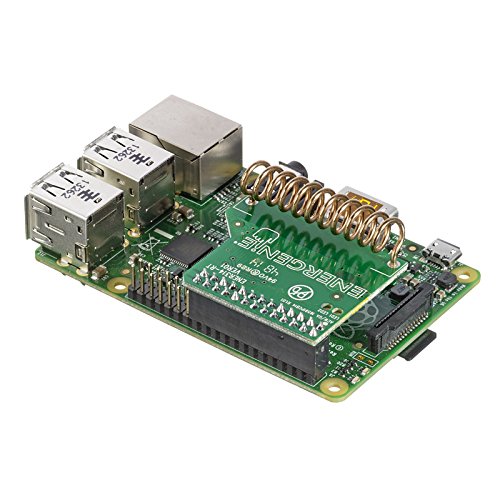




🔧 Unleash Your Inner Tech Wizard!
The Energenie ENER314-RT 2-Way Pi-Mote PCB is a compact, open-source solution designed for Raspberry Pi enthusiasts. With a range of 30 meters indoors, it allows for seamless control of Energenie sockets and energy monitors, making it an essential tool for DIY projects and smart home automation.
| Manufacturer | Energenie |
| Part Number | ENER314-RT |
| Package Dimensions | 6.4 x 6 x 1.2 cm; 10 g |
| Item model number | ENER314-RT |
| Item Package Quantity | 1 |
| Head Style | Open End |
| Batteries included? | No |
| Batteries Required? | No |
| Item Weight | 10 g |
H**B
Works perfectly, slight learning curve.
Use this code: [...] try not to have too much fun. Stonking bit of kit, good range, will probably do what you want it to fairly easily. That said some basic knowledge of programming is more or less essential. If you are on the fence go for it.
E**E
Software support is not great
works for with raspberry pi. Software support is not great
A**2
Existing Python software will not run on this.
I can make the C example code work, but I shall have to spend a lot of time reprogramming code to get it to do anything useful. If you know C well and have the time, it will do the job. I can't get Python to do anything with it when controlling my 'old style' receivers.
A**N
Great bit of kit. Not for the faint hearted.
I received my ENER314-RT as a Christmas present along with 2 ENER002 radio controlled sockets.Actually the package should have contained a Pi-mote (transmit only) but I was happy enough with this accidental alternative.As with the comments on the Pi-mote, you need to have programming skills to operate the ENER314-RT.If anything you need more programming skills for ENER314-RT. Why?The ENER314-RT is controlled via the Raspberry Pi's SPI interface instead of a collection of GPIO pins.I had no success using the Pi-mote sample Python code to control the ENER314-RT so I modified the sample 'c' code to control my ENER002s (I was a 'c' programmer earlier in my career). This can be downloaded from https://energenie4u.co.ukThis is the relevant directory in the downloaded software: 'ENER314-RT programs/ENER002/HopeRF_TRX(ENER002)'.I did not find the Product Instructions on the Energenie site to be that good; I basically studied the sample 'c' code and worked things out.You need to pair your ENER002s with the the board.I did not exercise the 'receive' functionality of the ENER314-RTI had to update my Debian image on the Raspberry Pi to get the software to work.I believe the ENER314-RT is hugely more versatile than the normal Pi-mote.I believe (but have not confirmed) that it can be used to control many more than 4 ENER002sbecause the 'c' code generates the whole RF message, not just the 4 bit 'payload' (I could be wrong on this).I think it could be used to control a wide range of 433MHz devices.From the 'c' code, I think it can be used with other frequencies too (again, I am not sure).Some negatives:My package should have contained a Pi-mote and two ENER002 RF sockets; instead of an RF Pi-mote it had an IR Pi-mote and had to be sent back to Amazon. The second one contained this ENER314-RT instead of the simpler Pi-mote (but as you can read above; I am quite happy with the latter error).The Product Instructions on the Energenie site are not great.The sample code definitely works (that for the ENER002 does anyway) but is a bit random.Still giving it 5 stars because its a great bit of hardware. It works. And it kept me amused and mentally excercised between Christmas and New Year.Please, no flames. Happy to correct any of the above if you point out my errors.
E**T
This board is incomplete without its software interface definition
It is quite possible that this board works perfectly. Unfortunately it is delivered just as it appears in the picture; i.e. no box, no supporting documentation or even a pointer as to where information about it can be found.The Energenie website has a document with pointers to some C code that when compiled and run tries to repeatedly switch 4 sockets ON and OFF but only actually does this when it attempts to switch all 4 at once. The program cannot be used for anything useful like switching a selected socket. The C programs have no comments and there is no interface definition that I have found. Claims that the board supports SPI and I2C are not backed up by I2C example programs so I suspect only SPI is supported. Some later Python programs appears not to work at all.What surprises me is that some one made this board presumably with a software interface definition which I am sure could be provided with the product. Personally, I have better things to do than derive the parameters from the program code that does not work properly anyway.
Trustpilot
3 weeks ago
1 month ago